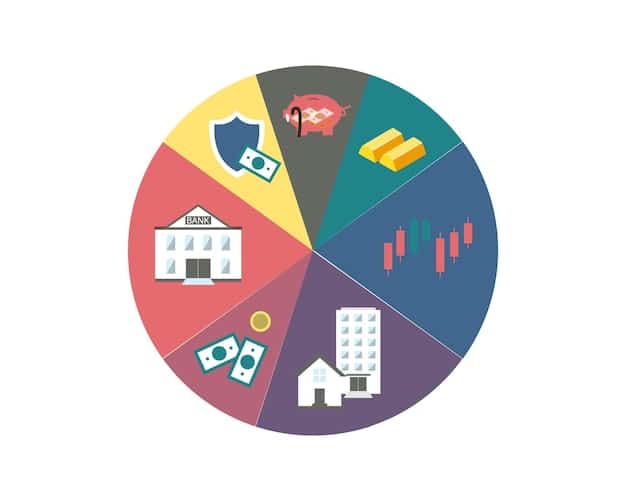Social Security Boost in 2025: How It Affects Your Retirement

The upcoming 3% increase in Social Security benefits in 2025 is poised to provide a welcome financial cushion for retirees, yet understanding its impact on your overall retirement plan requires careful consideration of factors such as inflation, tax implications, and long-term financial goals.
Planning for retirement involves many factors, and Social Security benefits play a vital role for many Americans. The projected 3% increase in Social Security benefits in 2025 can be an important consideration in your retirement planning, and it can either give an extra boost or mean very little depending on how well prepared you are. In this article, we’ll explore how the 3% increase in Social Security benefits in 2025 impacts your retirement planning.
Understanding the 2025 Social Security Benefit Increase
Each year, Social Security benefits are subject to a cost-of-living adjustment (COLA). This adjustment is designed to help protect the purchasing power of benefits against inflation. Let’s delve into the specifics of the projected 2025 increase.
The Social Security Administration (SSA) announces the COLA each October, and it’s based on the Consumer Price Index for Urban Wage Earners and Clerical Workers (CPI-W). This index measures changes in the prices of goods and services typically purchased by urban wage earners and clerical workers.
Factors Driving the Increase
Several economic factors usually contribute to the annual COLA adjustment. Here are some important factors:
- Persistent Inflation: Inflation erodes the value of money, making goods and services more expensive.
- Economic Growth: A growing economy can lead to higher prices.
- Federal Reserve Policies: The Federal Reserve’s monetary policies can influence interest rates and inflation.
The COLA is intended to ensure that Social Security recipients can maintain a consistent standard of living, even as prices rise. However, it’s important to remember that the CPI-W might not perfectly reflect the actual expenses faced by every retiree, as individual spending habits can vary. The COLA, although designed to help, may not fully compensate for the increased costs some retirees face.
In conclusion, the estimated 3% increase in Social Security payments will help to ease the burden of inflation on retirees and other Social Security recipients and is designed to maintain a constant standard of living. It is important to remember that this is not an actual raise but instead a way to keep up with the continuous rise in the prices of goods and services.
How the Increase Affects Different Retirement Income Brackets
The 3% increase doesn’t affect everyone the same way. Its impact varies based on income level, savings, and other sources of retirement income. Here’s a breakdown of how it may affect different income brackets.
For low-income retirees, this increase can be highly significant, because Social Security benefits often constitute a larger portion of their overall income. This extra income can prevent them from having to choose between necessities such as food and prescriptions.
High-Income Retirees
High-income retirees tend to have more diversified income sources, such as pensions, investments, and savings. A 3% increase in Social Security benefits may be less impactful to these individuals.
- Tax Implications: Higher income brackets may face higher taxes on their Social Security benefits.
- Investment Strategies: Wealthier individuals may adjust their investment strategies to account for the increased income.
- Estate Planning: High-income retirees should consult with financial advisors to assess implications for estate planning.
Many middle-income retirees will find the Social Security benefits increase to be a welcome boost to overall retirement income but it is important to have some diversification. Other income sources, such as 401(k)s or IRAs, may be an essential part of their retirement strategy.
In conclusion, the 3% COLA will affect different retirement income brackets in different ways. Some retirees will benefit greatly from this increase while others may not see much of a difference overall. It is important to take into account your retirement bracket when planning for retirement.

Planning Considerations with the Social Security Increase
Incorporating this 3% rise into your retirement plan requires some careful thinking. It’s not just about the extra money; it’s about how it fits into your broader financial picture. Here are some key planning considerations:
Budget adjustments are a must when any income changes come into play. This means re-evaluating your monthly expenses and possibly adjusting your savings strategy.
Revisiting Retirement Goals
It may be time to reconsider your long-term retirement goals and how the increased benefits could help you achieve them.
- Evaluate Spending Habits: Review your past spending and identify areas where you can adjust if necessary.
- Consider Inflation: Account for inflation to ensure your budget remains realistic over time.
- Consult Financial Advisors: Seek professional guidance to refine your budget and align it with your financial goals.
This could be one of the best times to work with your financial advisor to make sure you have a solid plan to meet your retirement goals. This is important regardless of retirement income bracket and should not be overlooked.
In conclusion, careful thought and planning need to occur when preparing for retirement. This includes planning for how the 3% increase in Social Security payments will impact your financial plan and adjust your spending habits accordingly.
Tax Implications of the Benefit Increase
Though a 3% increase in Social Security benefits sounds strictly positive, taxpayers need to be aware of the potential tax implications. Social Security benefits are subject to federal income taxes, and this addition in income could push you into a higher tax bracket.
One of the primary factors influencing the taxation of Social Security benefits is your combined income, which includes your adjusted gross income, non-taxable interest, and one-half of your Social Security benefits.
Strategies to Minimize Taxes
There are several things you can do to minimize the tax impact of increased Social Security benefits.
- Tax-Advantaged Accounts: Contributions to 401(k)s, IRAs, or other tax-deferred accounts can help lower your taxable income.
- Health Savings Accounts (HSAs): Contributions to HSAs are tax-deductible and can be used for qualified medical expenses.
- Charitable Donations: Donating to qualified charities can reduce your taxable income.
Beyond federal taxes, some states also tax Social Security benefits. It is crucial to understand your state’s tax laws. Consulting with a tax professional is always a great idea, especially when trying to minimize taxes. The increase in income could bump you into a higher tax bracket which could offset much of the benefits increase.
To summarize, it is essential to take into account any tax implications of the increase in your Social Security income. It could potentially elevate you to a higher tax bracket and ultimately cause you to pay more in taxes, offsetting much of the benefits of the increase in Social Security payments.

Investment Strategies and the Benefit Increase
The additional 3% can serve as a catalyst for reassessing your investment strategy. It might be time to shift your portfolio or diversify further. Let’s look at how to leverage this boost in income.
Assess your risk tolerance and consider adjusting your asset allocation. Depending on your age, goals, and risk appetite, you may choose to invest more aggressively or more conservatively.
Diversification and Asset Allocation
Spreading your investments across different asset classes helps mitigate risk. Consider diversification across stocks, bonds, real estate, and other alternative investments.
It is prudent to work with a financial advisor to make sure you have a well diversified portfolio and are not overly invested in one particular commodity. Retirement income can always be supplemented with a stable well diversified portfolio.
In conclusion, you can utilize the increased Social Security income to further diversify your portfolio and ultimately maximize your retirement income.
Long-Term Impact on Retirement Security
Understanding the long-term impact of the 3% increase is important to maintaining retirement security.
Inflation is an ongoing concern for retirees. Even with the annual COLA adjustments, the rising cost of living can erode the purchasing power of your benefits.
With unexpected healthcare costs or other emergencies, it is important to have an emergency fund available.
In conclusion, the 3% increase in income should be leveraged in order to meet your retirement goals. By planning and managing your budget, you can achieve financial security.
| Key Point | Brief Description |
|---|---|
| 💰 Benefit Increase | A 3% increase in Social Security benefits is projected for 2025. |
| 📈 Inflation Impact | Helps offset inflation’s effect on purchasing power. |
| 💸Tax Implications | Could lead to higher taxes on Social Security benefits. |
| 📊Investment Strategy | Opportunity to reassess and diversify investment portfolio. |
Frequently Asked Questions
▼
The COLA is based on the Consumer Price Index for Urban Wage Earners and Clerical Workers (CPI-W), which measures changes in the prices of goods and services typically purchased by these groups.
▼
The Social Security Administration typically announces the COLA in October of each year, based on the CPI-W data from the third quarter.
▼
Medicare premiums can also increase, but it’s independent of the COLA. It is important to stay on top of these costs when planning.
▼
You can minimize the tax impact by using tax-advantaged accounts, health savings accounts, and making charitable donations.
▼
Yes, you should revisit your retirement plan and consider inflation, spending habits, and consult with financial advisors to develop a proper plan.
Conclusion
Understanding how the 3% increase in Social Security benefits in 2025 impacts your retirement planning is essential for long-term financial security. By considering the factors outlined in this article, you can strategically plan your retirement, so you can spend your golden years in comfort and financial freedom.





